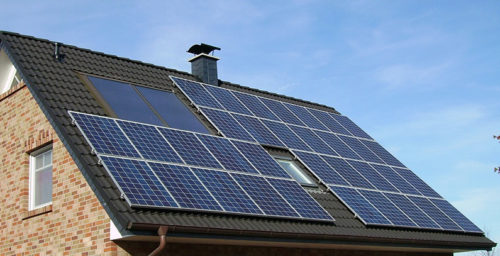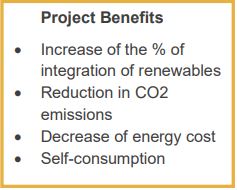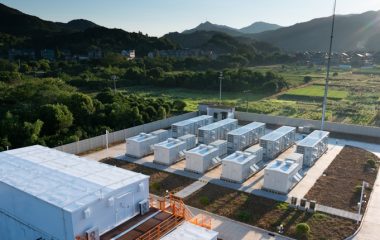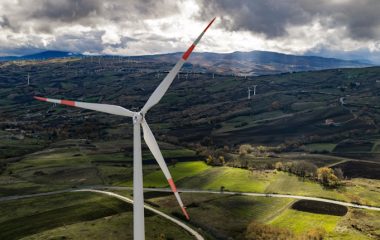
Photo: ETIP SNET
The LEAFS project, implemented by the Austrian Institute of Technology, addresses challenges that arise from a growing number of prosumers. The project seeks to make citizens more involved in Europe’s energy transition by establishing new ways of interacting with the energy market and grid operators.
The story about the project is brought by the European Technology and Innovation Platform Smart Networks for Energy Transition – ETIP SNET Energy Stories which are designed to bring successful applications in energy transition technologies, often developed through public funding, closer to the citizen, highlighting whenever possible the direct benefits of the latest technologies to the energy consumer.*
Becoming a prosumer implies addressing several challenges
The consumer’s behaviour regarding their own energy needs will change in the future. Energy users won’t just be simple electricity, gas or heat consumers anymore but prosumers who produce energy through, for example, photovoltaic panels (a.k.a: solar panels) installed on or around their houses and using innovative equipment such as heat pumps, energy storage devices (i.e: batteries) and electric vehicles that will interact with the energy market through different pricing mechanisms such as time variable tariffs.

Becoming a prosumer implies addressing several challenges. For example, problems will arise for the energy distribution grids if many prosumers react to a low or high market price at the same time. Simultaneous reactions can bring about system failures that could potentially lead to power outages.
A solution to address this kind of problem can come from new communication technologies: new phone or computer apps could aid in the management of prosumers’ energy supply in the marketplace by automatically taking into account the electricity price which is shaped in part by how all other prosumers interact with each other in the marketplace.
Such apps would be used to intelligently control devices (on/off, temperature setpoints, etc) for balancing prosumers’ own energy needs and the effect of their actions on the stability of the electricity system. However, before such comprehensive apps can become common use, some research on the tools that can provide the energy grid with the necessary flexibility is needed.
Flexibility is understood as the ability of the energy system to quickly react and adapt to changes in energy supply and demand while maintaining a steady balance between the two.
How to efficiently increase the flexibility of the energy system?
The LEAFS project led by the Austrian Institute of Technology wants to show how to activate flexibility from prosumers connected to the low-voltage grid in a “grid friendly” way and without subsequent expensive reinforcements of the grid infrastructure. To do so, LEAFS conducts field trials in three different regions of Austria with different approaches:

- Community storage operated by the energy supplier. In the village of Heimschuh, LEAFS implemented a large storage system (100kW/100kWh) which is operated by the local energy supplier. The large storage acts for a community of up to 10 prosumers. It is also able to provide grid stability and market services at the same time. For instance, the large storage system can participate in the spot market by buying electricity when it’s cheap and selling it when it is expensive.
- Financial incentives for customers. An additional test in Eberstalzell was performed to analyze the effect of new incentives for prosumers to activate flexibility in a grid friendly way and at the right time. More than 100 households receive a bonus when they consume electricity at a time where there is a high local generation by photovoltaic systems (like solar panels). The customers are informed on the availability of the bonus via an app.
- Photovoltaic home storage providing grid and market services. In the villages of Eberstalzell and Köstendorf, LEAFS installed three photovoltaic home storage systems which can be used for additional market and grid services. A grid monitor and controller operated by the local Distribution System Operator communicates grid flow and electricity system limitations to avoid power outages.
Impact
The LEAFS project shows how the three actors (prosumer, operator, market) can dynamically interact without creating power outings or other problems to the infrastructure or for the consumers.

After several months of successful field testing, LEAFS partners are confident that the tested infrastructures will lead to positive outcomes for prosumers. Indeed, the project contributes to the EU’s energy transition by facilitating energy prosumers’ and consumers’ entry into the energy market – by producing and selling their stored energy they will contribute to the creation of a flexible energy market enabling grid friendly activation of flexibility.
The more prosumers embrace technologies such as those tested by LEAFS, the more flexibility options grid operators will have, meaning more possibilities for the integration of renewable energy sources into the market and more prosumer control over energy consumption.
*European Technology & Innovation Platforms (ETIPs) have been created by the European Commission in the framework of the new Integrated Roadmap Strategic Energy Technology Plan (SET Plan) by bringing together a multitude of stakeholders and experts from the energy sector.
The ETIP Smart Networks for Energy Transition (SNET) role is to guide Research, Development & Innovation (RD&I) to support Europe’s energy transition.









Be the first one to comment on this article.